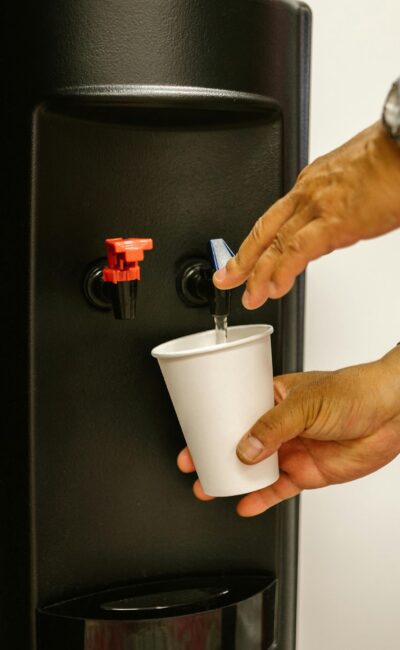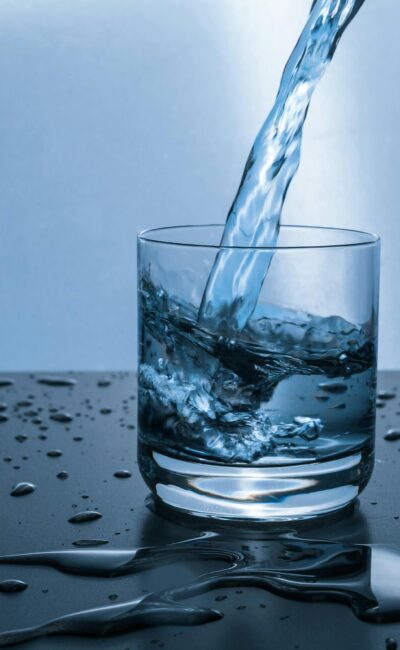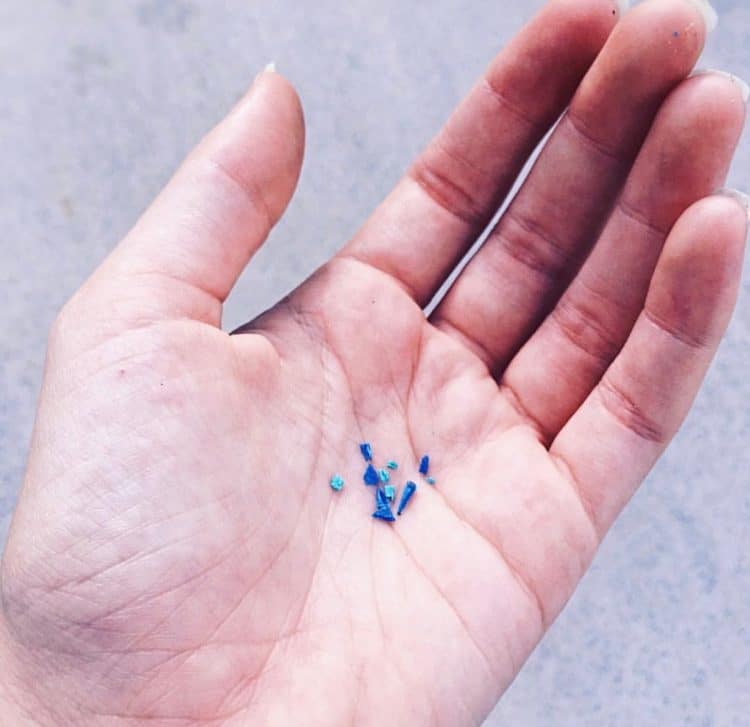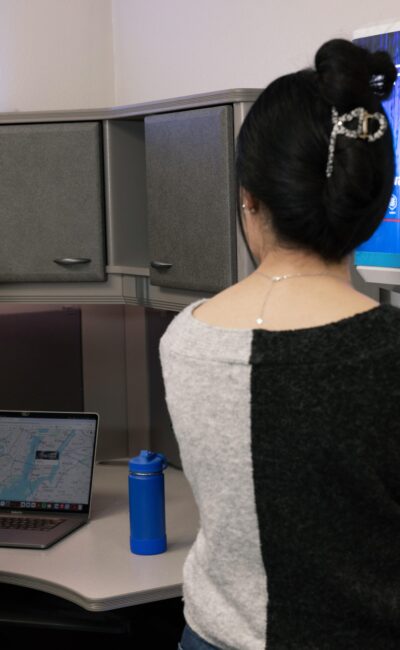If you’ve been working hard and plugging away at your emails, a sip of coffee may not provide the refreshing feeling you’re looking for. In that case, you might start thinking about pouring yourself a cool glass of water instead.
But this is where questions begin to arise. Is your office’s tap and water dispenser clean and safe to drink from?
The Occupational Safety and Health Administration (OSHA) provides guidelines and regulations that hold businesses and gyms to a set of standards regarding the drinking water they provide and ensuring drinking gym water is clean and healthy for its consumers.
Whether you’re an employee wondering exactly how clean your water is or a business owner asking yourself, “do employers have to provide water?” knowing OSHA regulations will set you up for success. Our guide is the perfect way to become acquainted with the ins and outs of what OSHA requires for drinking water. Read on to answer all your questions!
What is OSHA?
OSHA stands for Occupational Safety and Health Administration and is a branch of the United States Department of Labor. The organization was created following the Occupational Safety and Health Act of 1970, a public health law that makes sure employers create safe working environments for their employees.5
What Are OSHA’s Rules Around Drinking Water?
Does an employer have to provide water that’s safe and drinkable? The answer to your question is yes.
Under OSHA’s guidelines, all employers must provide potable drinking water for their employees to drink as they work.
Not only do employers have to supply water, but that water also has to meet specific standards. OSHA calls water that meets its standards “potable,” meaning that it’s fit for human consumption and is clean.
How does OSHA define water as potable? It derives its standards from the United States Environmental Protection Agency (EPA). The EPA mandates that for water to be considered safe to drink, it must contain little to no contaminants, such as:
- Arsenic
- Chlorine
- Bromate
- Animal and human waste
- Mercury
- Lead
- Viruses
Any water that meets the EPA’s official guidelines is clean and drinkable, even if it’s tap water.
How Should Water be Dispensed?
A big part of making your water sanitary is ensuring that it’s appropriately dispensed. Whatever you’re pouring your water out of needs to stop that water from being contaminated before people can drink it. OSHA safe water dispensers are either:
- Sealed
- Able to be closed
- Poured from a tap
In order for employers and employees to reap the benefits of drinking water at work, it’s critical that the water source preserves sanitary conditions at all times. Some examples of water vessels that don’t do so, and are thus not allowed, are:
- Pails
- Lidless drink tanks
- Dipping barrels
- Communal water cups
If your business is looking for a safe and sanitary water dispenser, you might be interested in the Flowater Touchless Water Dispenser. It offers a two-for-one benefit: it purifies your drinking water to OSHA standards and provides you with a safe way to dispense it. Its easy touch button system also makes it simple to understand and convenient to disinfect with a simple wipe. And the delicious taste is an added bonus.
Since all employees are entitled to water, it’s important to provide it for them. The only exception to this rule is when keeping water accessible would pose a safety hazard to employees. And even then, frequent water breaks are mandatory for those employees.
If you’re an employee and your company isn’t making water accessible to you, you’re now aware that this is a violation of OSHA regulations. Feel free to speak up and have that changed.
Does OSHA Have Other Rules Around Water?
Do employers need to provide water supply for other purposes? Once again, the answer is yes. They’re also obligated to make water accessible for:
- Cooking
- Dishwashing
- Cleaning food
- Washing utensils
- Personal use
Labeling Non-Drinkable Water
Water used for other purposes other than drinking has different quality standards. The last critical OSHA regulation to keep in mind is that you need to distinguish between drinkable and non-drinkable water. If you’re a business that uses certain water for cleaning, you need to clarify that to prevent any potential mix-ups. That’s why OSHA requires you to label any water sources where the water doesn’t meet the drinkability standards set by the EPA.
When you label these water sources, you need to do so in a way that lets employees know that the water coming out of them isn’t fit for:
- Drinking
- Washing plates, glasses, or utensils
- Cooking
- Cleaning clothes
- Rinsing food
- Any other personal uses
If you don’t make it expressly clear that your non-potable water isn’t safe for various purposes, you run the risk of an OSHA fine or citation.
What is Non-Potable Water For?
What’s the point of having non-drinkable water on business premises if you need to label it extensively? And if you’re an employee who sees non-potable water on the premises, is it inherently a rule violation?
Non-potable water can have many purposes that make it perfectly reasonable to keep on the premises. It’s only a violation if it’s not properly labeled since non-drinkable water is useful for professions that involve:
- Industrial work
- Cleaning
- Firefighting
There are many reasons a business might choose to dispense non-drinkable water on its premises. As long as it’s labeled, it’s fine.
Do Employees Ever Have to Pay for Water?
When supplying water that meets OSHA standards, you can’t offload any of that cost onto your employees.
Regulations state that all water offered at a workplace must be free for employees to enjoy. This means you can’t ask workers to:
- Buy water at a vending machine
- Reimburse you for the cost of bottled water
- Foot the cost of water jugs for the water cooler
If you have drinkable tap water, you can look to that as a free source of drinkable water for your employees. If not, you can either pay for bottled water or find a cheaper option—such as a filter—that would make your tap water drinkable.
What Do I Do if Our Water Isn’t Drinkable?
Since OSHA is in charge of setting and establishing safety guidelines, it’s necessary to comply with them to avoid citations and fines. Fortunately, OSHA makes a variety of programs available to businesses seeking advice. They include:
- Compliance assistance – These specialists can offer you information about OSHA regulations and how your business should comply with them.
- On-Site consultations – OSHA workers will come to your company and provide hands-on advice about what needs to be improved or brought up to standards free of violations and citations if you take advantage of this program.
Feel free to use these programs to make sure everything is up to code at your place of work. Otherwise, you might face several fines.
There are also easy solutions for offices without current access to potable tap water. While you might be tempted to drive to the nearest superstore for a rack of bottled water, there are other solutions.
Instead of shelling out for bottled water and contributing to plastic waste, you can simply add an office water cooler for employees to easily access throughout the work day. The FloWater Touchless Water Dispenser is one such innovation that can help make your water drinkable. It significantly reduces or eliminates:
- Lead
- Fluoride
- Arsenic
- Mercury
It’s also a cost saver for many workplaces. Say hello to ultra-purified water on tap for a cost that’s less than a latte a day thanks to the Flowater Touchless Water Dispenser.
Water Quality Beyond OSHA Requirements
Drinking water during the workday has countless potential benefits for employees and the organizations they work for. These include:
- Less employee stress – Dehydration can lead to rising cortisol levels and accompanying feelings of anxiety. Over time, these can affect a person’s health. Luckily, the simple act of drinking water can help keep stress levels down so that employees are fully present throughout the workday and in their leisure time.
- Improved health and wellness – Water is essential to our bodily systems, which is why it’s an essential component of learning how to stay healthy in the workplace. While we’re sometimes tempted to reach for caffeine or sugary sports drinks, there’s no substitute for water in maintaining overall health.
- Greater productivity – One organ that’s especially affected by hydration levels? The brain. While a lack of water can lead to headaches and fatigue, drinking plenty of H2O can help employees stay focused throughout their workdays.
With benefits like these, it’s important to provide water that’s not just OSHA-approved but also delicious. If the tap water in your area is safe but hard, sulfurous, or otherwise less-than-appetizing, invest in a water filter or water dispenser that provides the cool, refreshing water employees actually want to drink.
Let FloWater Be Your OSHA Buddy
When it comes to OSHA, it’s critical for businesses to ensure that they’ve crossed all their T’s and dotted their I’s.
At FloWater, we specialize in products that make OSHA guidelines cost-effective and straightforward to navigate. Our FloWater Faucet Filter is a top-notch purifier that will easily keep your tap water contaminant-free and OSHA-compliant. Want something you can station in various locations to make water accessible? The Touchless Water Dispenser might be more up your alley. Our Touchless Water Dispenser is the first of its kind to put your water through seven stages of purification, giving you the best final product possible.
If you’re a boss looking for guidance, FloWater wants to help. And if you’re an employee who’s curious about our products, we want to assure you that your drinking water is in safe hands. Get more information about FloWater and our prices today!
Sources:
OSHA.gov. At a Glance OSHA. https://www.osha.gov/sites/default/files/publications/3439at-a-glance.pdf
OSHA.gov. OSHA Frequently Asked Questions. https://www.osha.gov/faq#v-nav-drinkingwater
EPA. National Primary Drinking Water Regulations. https://www.epa.gov/sites/default/files/2016-06/documents/npwdr_complete_table.pdf
OSHA.gov. Regulation 1910.141 – Sanitation. https://www.osha.gov/laws-regs/regulations/standardnumber/1910/1910.141
About OSHA, United States Department of Labor, Occupational Safety and Health Administration, https://www.osha.gov/aboutosha.





